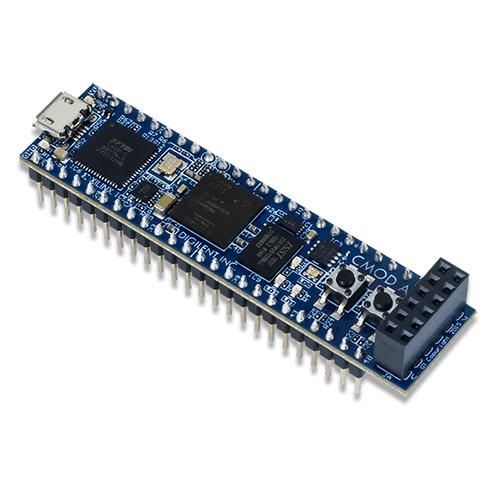FPGA Boards
Programmable logic technologies, such as field-programmable gate arrays (FPGAs), are an essential component of any modern circuit designer's toolkit. With their expansive capabilities uniquely suited to a wide array of applications, FPGA development boards are ideal for solving many of the problems facing the rapidly evolving technology sector. The key benefits of programmable logic technologies include immense flexibility, cost savings over custom silicon, and increased performance through hardware parallelism.
Note: AMD software tools are not available for download in some countries. Prior to purchasing a Digilent FPGA/SoC, please check the supporting software's availability, as it is required for the board's use.
A high-quality development board allows designers, students, and engineers to prototype and deploy hardware-accelerated systems without the steep costs or time commitments of custom chip fabrication.
From teaching digital design to building embedded AI solutions or developing communication protocols, choosing the right development board keeps your workflow fast, scalable, and ready for the future.
FAQs:
- What is a development board and why use one with FPGAs?
- A development board is a ready-to-use hardware platform that allows users to program, test, and validate designs before committing to custom hardware. In the FPGA world, these boards accelerate learning, prototyping, and deployment by offering built-in power management, memory, connectors, and toolchain support.
- How do I choose the right FPGA board for my project?
- It depends on your goals. For entry-level or classroom use, focus on user-friendly development boards with built-in peripherals and tutorials. For professional or research projects, look for features like high-speed I/O, large logic cells, and compatibility with VHDL/Verilog workflows. Consider factors like available documentation, toolchain compatibility, and onboard resources.
- Are Digilent FPGA development boards beginner-friendly?
- Yes. Many of Digilent’s FPGA boards come with extensive tutorials, prebuilt projects, and support for AMD Vivado or Vitis software. Boards like the Basys 3 and Arty S7 are ideal for students and first-time users, offering a smooth introduction to digital logic design and embedded hardware development.












